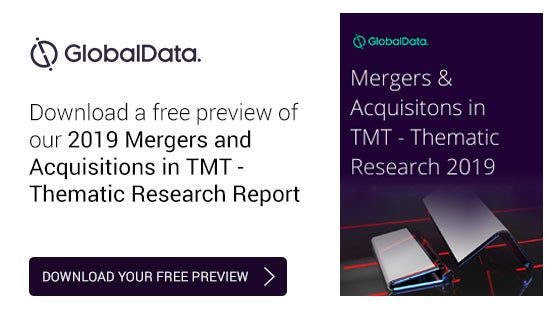Newbow Aerospace Specialist Aircraft Ground Support Equipment, Tooling and Instrumentation

Newbow Aerospace is dedicated to the manufacture and supply of specialist aircraft ground support equipment that will improve safety and efficiency during pre-flight maintenance, service and inspection procedures.
Today, the majority of leading world airlines, MROs and defence organisations across the globe use our equipment. Aircraft ground support equipment:
- Tyre pressure check gauges
- Tyre inflation equipment and kits
- Portable charging units (PCU)
- Strut, accumulator, oleo charging equipment
- Nitrogen service trolleys and carts
- Oxygen service trolleys and carts
- Wheel and brake service trailer
- Wheel and brake dolly
- Maintenance steps and platforms
- Wheel chocks
- Tyre service tools
- Nitrogen and oxygen cylinder equipment
- Bespoke nitrogen generation systems
- Air jack accessories
- Hydraulic and pneumatic hoses, fittings, couplings & inserts
- Military equipment
When using Newbow Aerospace ground support equipment on a daily basis, many of our customers quickly benefit from the following advantages:
- Considerably improve pre and post-flight fuel economy from reduced tyre drag
- Increase safety and reduce tyre failure
- Increase the number of landings per tyre
- Increase tyre performance
- Reduce the risk of hydroplaning
- Reduce aircraft shock damage during landing
Tyre pressure checking gauges / equipment
All aircraft tyre pressure gauges manufactured by Newbow Aerospace are highly recognised within the global aviation industry for accuracy, reliability, quality and safety. Each tyre pressure check gauge is calibrated to a tolerance of +/- 1% at reading, which offers the ability to precisely set pressures.
We offer a choice of more than twenty different aircraft tyre pressure check gauges suitable for every aircraft make and model in operation. All units are supplied with 12 months calibration period, 12 months warranty and are issued with full certification.
Tyre inflation equipment
Newbow Aerospace offers a wide range of tyre inflation and high pressure charging equipment. The tyre inflation tool is equipped with a 0-350psi indication pressure gauge that is calibrated to an accurate +/-1.5% at reading. This allows accurate inflation and setting of aircraft tyre pressures. Safety is paramount when inflating a tyre, which is why the majority of leading world airlines and MROs around the world currently use the Newbow tyre inflator.
Each item is supplied with 12 months calibration period, 12 months warranty and is issued with full certification. Newbow Aerospace also offer a wide range of tyre inflation kits, tyre inflation hoses, nitrogen supply hoses, tyre valve connectors, couplings, inserts, adapters, nitrogen and oxygen regulators, bottle and cylinder trolleys, and wheel and brake service trolleys.
Aircraft ground support equipment
Newbow Aerospace offers a wide variety of aircraft ground support equipment that is suitable to all make and model aircraft, ranging from business jet through to commercial jet liners.
Our range of light equipment, which includes aircraft tyre pressure check gauges, tyre inflation kits, charging hoses, cylinder regulators, wheels chocks and pneumatic hose fittings, are held in stock at our UK facility for fast turnaround times. All equipment is provided with certificate of conformity and calibration test records where applicable.
The large ground support equipment we offer includes wheel and brake dollies, nitrogen and oxygen carts, wheel service trailers and aircraft engineer steps. This equipment has been designed with the assistance of aircraft engineers to ensure the end user will gain maximum benefit when working in and around the aircraft.
Specialist aerospace calibration services
Being a leading manufacturer and provider of aircraft ground support equipment, Newbow Aerospace offers a comprehensive calibration, test, and service and repair facility for a wide range of equipment.
All equipment is fully serviced and maintained to the highest of industry standards.
Newbow Aerospace is ISO9001:2008 and NATO registered.
Products and Services
Video
White Papers
Related Projects

Valkyrie Aircraft

Zunum Aero Hybrid Electric Aircraft

Bell 407GXi Helicopter

PAL-V Liberty Flying Car

Samson Switchblade Flying Sports Car

Joint Polar Satellite System (JPSS) 2 Satellite

Stemme Twin Voyager S12 Motor Glider

Pipistrel Alpha Trainer Aircraft

Mooney M10T Aircraft

Flyox I Amphibious UAV
Press Release
Newbow Aerospace has unveiled its new range of cost-effective nitrogen and oxygen service carts. Moving away from the common flat bed service cart, Newbow Aerospace has introduced a unique, fully demountable service cart that allows one person to load and unload two large cylinders at
Read moreNewbow Aerospace, the leading specialist in the manufacture and supply of aircraft gse and tooling, is pleased to announce its partnership with Hale Hamilton, a UK company that specialises in high pressure control valves and bespoke nitrogen and oxygen control systems. Under the partner
Read moreNewbow Aerospace Ltd is pleased to announce that it has recently received a 3-year contract from the Ministry of Defence for the supply of specialist aircraft tyre pressure check gauges. To date, the Ministry of Defence has approximately 700 Newbow aircraft tyre pressure check gauges i
Read moreUK-based leading aircraft ground support equipment manufacturer and provider Newbow Aerospace has successfully upgraded its quality management system to ISO9001:2008. "Updating our quality system to the new 9001-2008 certification so soon after its introduction demonstrates that we are
Read moreRegional Offices
Meir Road
Park Farm North
Worcestershire
Redditch
B98 7SY
Other
United Kingdom














